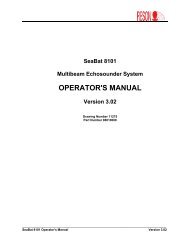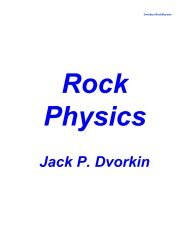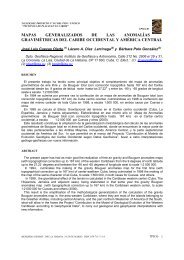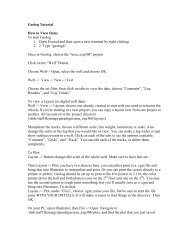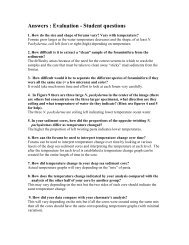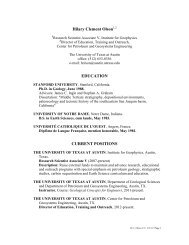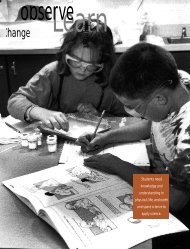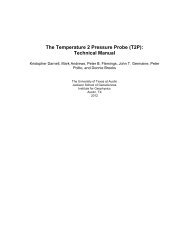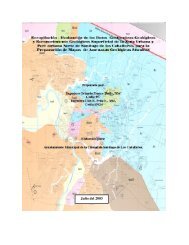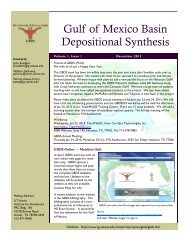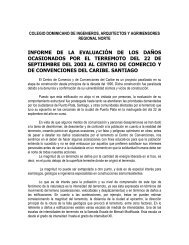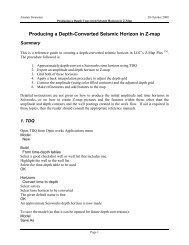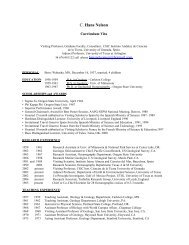IGCP Project short title: Caribbean Plate Tectonics Duration and ...
IGCP Project short title: Caribbean Plate Tectonics Duration and ...
IGCP Project short title: Caribbean Plate Tectonics Duration and ...
You also want an ePaper? Increase the reach of your titles
YUMPU automatically turns print PDFs into web optimized ePapers that Google loves.
19<br />
geology of Cuba were the subject of interesting debates <strong>and</strong> active exchange of data <strong>and</strong><br />
interpretations.<br />
The oral presentations <strong>and</strong> panel discussion was attended by a total of about 70-80<br />
scientists. In the first presentation, M. Iturralde-Vinent (Cuba) gave an overview of the<br />
current state of plate tectonics in the <strong>Caribbean</strong> realm with special references to the geology<br />
of Cuba. He made the important point that detailed stratigraphic <strong>and</strong> tectonic data are critical<br />
to any viable plate tectonic model, but still there are many geologic units within the<br />
<strong>Caribbean</strong>, <strong>and</strong> specially in Cuba, whose origin <strong>and</strong> evolution is poorly understood, because<br />
the lack of modern studies. Therefore, underst<strong>and</strong>ing the <strong>Caribbean</strong> plate evolution will still<br />
require more field <strong>and</strong> laboratory research in key areas. Z. Gasparini (Argentina) then<br />
discussed the role of Jurassic marine reptiles in Cuba <strong>and</strong> their importance in evaluating<br />
early marine seaways in the early evolution of the <strong>Caribbean</strong>. This author suggested that the<br />
interchange of marine animals between western Tethys <strong>and</strong> the Pacific predate the break-up<br />
of Pangaea, as rocks of Lower <strong>and</strong> Middle Jurassic age yield fossils of marine reptiles in the<br />
eastern Pacific (Chile, Argentina, <strong>and</strong> in allochthonous terrains of Mexico, which show<br />
west-Tethyan affinities. The third <strong>and</strong> fourth presentations were made by G. Draper (USA).<br />
He discussed the high-pressure metamorphic rocks of central Cuba as metamorphic core<br />
complexes exposed as a result of low degree extensional faulting within the continental<br />
margin. He then discussed the early oceanic crustal terranes of central Hispaniola <strong>and</strong> the<br />
evidence they show for a mid-Cretaceous orogenic event <strong>and</strong> its possible relationship with<br />
the polarity subduction reversal of the <strong>Caribbean</strong> "Great Arc". G. Giunta (Italy) reported on<br />
the Motagua suture zone in Guatemala <strong>and</strong> its role as the northwestern boundary of the<br />
<strong>Caribbean</strong> plate. New geochemical data from the ophiolites suggest that there are both<br />
MORB <strong>and</strong> isl<strong>and</strong> arc complexes in the Motagua suture zone. The final oral presentation was<br />
made by J. Lewis (New Zeal<strong>and</strong>) who described the tectonic <strong>and</strong> petrologic significance of<br />
peridotites <strong>and</strong> constituent chromitites as obducted fragments of contrasting mantle sections<br />
in the northern <strong>Caribbean</strong> region. These data, thou preliminary, indicate that the two large<br />
ophiolite outcrops of northeastern Cuba, yield distinct geochemical signature. M. Iturralde-<br />
Vinent then concluded with a discussion of the similarities <strong>and</strong> discrepancies that exist<br />
among the modern <strong>Caribbean</strong> plate tectonic models.<br />
Posters presented as part of the northern <strong>Caribbean</strong> plate boundary Workshop<br />
included the following: New aspects of the geology of eastern Cuba (G. Millán-Cuba);<br />
Structural deformation phases at the northern plate boundary in Cuba (K. Nuñez-Cuba);<br />
Transitional marine environments in carbonate rocks of the Cretaceous volcanic arc of Cuba<br />
(R. Rojas-Cuba); Oceanic plagiogranites in Cuba (Sukar-Cuba); <strong>and</strong> Tectonic <strong>and</strong> geologic<br />
evolution of serpentinites in Puerto Rico (E. Lidiak-USA).<br />
19



